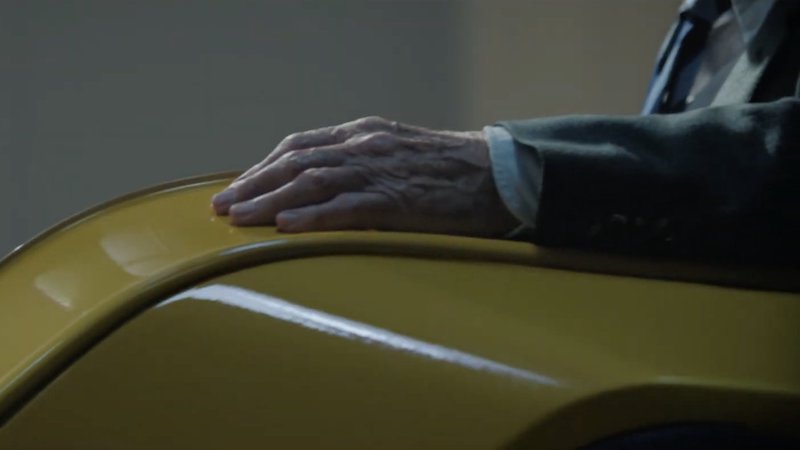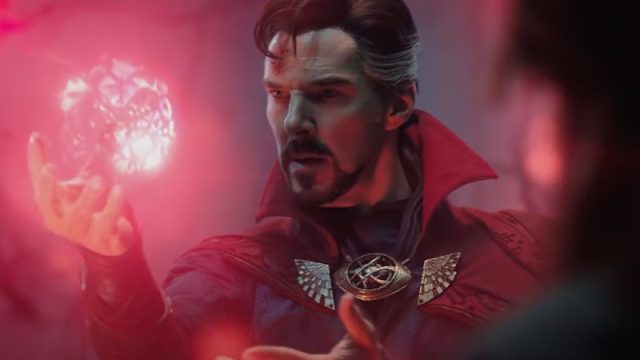Though I previously described Doctor Strange in the Multiverse of Madness as a film that is “appropriately odd, satisfyingly violent, and generally succeeds as a piece of dark, popcorn entertainment,” it has its fair share of flaws. The film feels like a hodgepodge of ideas that don’t fully gel and the end result doesn’t seem to mean much for the Marvel Cinematic Universe at large, no matter what that mid-credits teaser tells us.
Let’s take a look at where this entry in the MCU stumbled (after taking a look where it succeeded, of course).

A Limited Benedict Cumberbatch
Benedict Cumberbatch is an amazing actor — see Sherlock, The Imitation Game, and The Way of the Dog — and certainly passes the eye test for the Doctor Strange character. However, after five films and counting you’d think Marvel would give him something more to do than deliver smart-ass dialogue and react to CGI monsters. There was a chance here to build an emotional narrative around Strange and Christine’s failed romance, but the film never fully explores the plot point beyond a few rudimentary scenes and severely underutilizes Cumberbatch’s talents.
America Chavez
As played by plucky young star Xochitl Gomez, America Chavez leaves quite the impression as the latest hero to go on one of those half-baked MCU journeys — i.e., she can’t control her powers until the script says so — even if she mostly stands around looking bewildered by the wild happenings around her person. When the time comes for her to fully embrace her superhero persona — by punching real hard, I guess? — the climactic moment lands with a thud because we know nothing about America beyond a briefly-touched-on tragic backstory involving her parents.
I’m sure we’ll learn more about America in future adventures, but her inclusion in Doctor Strange felt more like a rushed origin story than a necessary inclusion in the actual film.
RELATED: Benedict Cumberbatch Is Willing to Play Doctor Strange for the Next Decade
Danny Elfman’s Score
Danny Elfman’s collaborations with Sam Raimi have resulted in some truly thrilling musical scores — Darkman, Spider-Man and Spider-Man 2, for example — and the composer’s inclusion on Doctor Strange 2 was one of the reasons I was excited to see the latest MCU adventure. Alas, like many Marvel scores, Elfman’s music lacks thematic substance and instead resorts to atypical background noise devoid of themes or any type of identity. What’s more, he jettisons Michael Giacchino’s work from the original Doctor Strange (which remains one of the better MCU scores) in favor of a stand-alone score with no discernible identity.
Studio Meddling
As stated above, you can tell Sam Raimi wanted to push things further. Indeed, the director revealed the original cut for Doctor Strange 2 ran nearly three hours in length before reshoots truncated the plot. I have a feeling the new scenes toned down the violence as well because … well … Disney. Not that an additional 40 minutes of violence would make the film any better, but why bring on Sam Raimi only to handcuff him? Give the man free rein to tell his story and live with the consequences. Did we learn nothing from Spider-Man 3?

Forced Cameos
Cameos are all the rage in the MCU these days. Fans go wild for a 10-second scene of Daredevil catching a brick in No Way Home, even if said scene adds nothing to the overall plot of the surrounding film.
Doctor Strange 2 doesn’t go too far with the cameo gimmick, but there is an extended sequence that introduces the Illuminati — a secret organization comprised of Krasinki’s Reed Richards, Mordo (Chiwetel Ejifor), Charles Xavier (again played by Patrick Stewart, for reasons), Black Bolt (Anson Mount), Maria Rambeau, aka Captain Marvel (Lashana Lynch), and Captain Peggy Carter (Hayley Atwell) — that leads to, well, nothing of consequence. Scarlet Witch appears and quickly dispatches the team in brutal fashion, and no one seems to give a damn.
What do we make of this group of characters? Was anyone really clamoring for any of these guys beyond Mr. Fantastic? Is there no one else who can play Professor X?
Speaking of which, this feels like the umpteenth time Marvel has teased mutants in this universe but failed to deliver anything beyond a brief appearance from a former X-Men star. Are we ever getting the X-Men in the MCU?
RELATED: Doctor Strange 2 Is a Flawed Follow-up to Disney+’s WandaVision
No Consequences
After everything that happens in Doctor Strange 2, you’d think we’d get a stronger lead into a follow-up film. I mean, an alternate universe’s most powerful group of heroes was unceremoniously wiped out and the result is Charlize Theron appearing in a mid-credit scene to whisk Strange away on another rip-roaring adventure through the cosmos. I suppose it’s my fault for expecting anything that happens in the MCU to have lingering consequences — this is the same series that wiped out half the galaxy for five years and brought everyone back without much of a hitch — but every action made by a hero/villain should have repercussions, otherwise, there’s really no point.
Multiverse of Madness introduces some truly unique ideas into the Marvel franchise — notably, powers that stem from ancient witches and Hell itself — only to brush them aside without much thought. Really, the events of the film amount to little more than Wanda’s supposed death and Strange now possessing a third eye. At some point, the MCU needs to reach another gear and deliver spectacle that carries more weight. Though, considering the film is on its way to another billion dollars, why mess with success?










